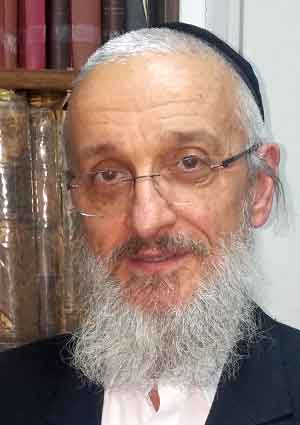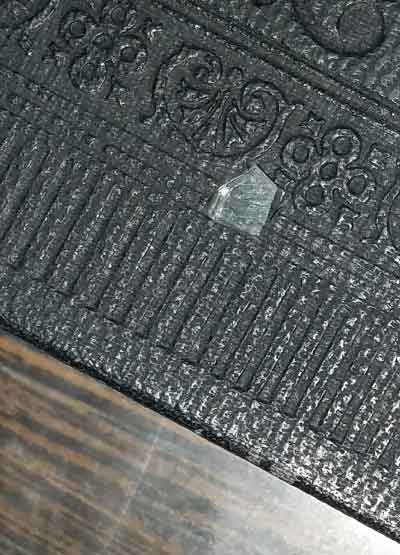Rav Yonason Wiener

Melbourne, Australia
Yeshivat Kol Torah: 5 years
Yeshivat Brisk (Rav Dovid Solevechik): 7.5 years
Rabbi in Ohr Somayach (Ohr LaGolah Program) for the past 20 years
When the windows of his apartment at 15 Scheurenstrasse, Dusseldorf shattered, and the marauding crowd of Nazis broke into his home, ransacking it and hurling his sefarim and Shas into the street, Yosef Wiener, his wife and daughter ran into the bedroom and hid. It was November 9th, 1938 — Kristallnacht — and the destruction of the Jewish community in Germany had begun in earnest. The attacks were ostensibly in retaliation for the assassination two days earlier of the German diplomat Ernst vom Rath by Hershel Grynszpan, a seventeen-year-old German-born Polish Jew living in Paris. At great personal risk, their teenage daughter Paula ran into the street and retrieved the Shas.
In August of 1938 the Nazi regime had revoked the residency status and citizenship of the Ostjuden — Jews who had emigrated from Poland. By the end of October 1938 the regime began deporting them to the Polish border. Yosef Wiener and his wife were Ostjuden. They had both been born in Poland and had immigrated to Germany many years before. Yosef, a talmid chacham and businessman, was a community leader who had applied for an American visa. But now, after being stripped of their German citizenship they were subject to the quota for immigrants from Poland. Because there were tens of thousands of Jewish applicants who also had been born in Poland, the Wieners had a long wait until their number would be reached.
After Kristallnacht, Yosef travelled to Stuttgart with his wife and daughter to plead with the American Consul there for a lower number. While the Consul was very courteous, he told Yosef that nothing could be done to help his family. (Ironically, Yosef received a letter in the middle of World War II from the American Government that told him that he and his family were now eligible for visas — imagine if they had waited for it!)
While the Wieners were in their hotel in Stuttgart, the Nazis came to the hotel looking to arrest all Jewish men. Yosef hid on the balcony. When the Nazis burst into their hotel room, Mrs. Wiener (Rachel) told them that she and her daughter had travelled to Stuttgart without her husband. They left without searching the balcony. Paula pleaded with her father to leave Germany immediately, and Yosef boarded the next train and fled to Maastricht, Holland, where his sister-in-law, Rosy Gellert, lived. Rachel and Paula returned home to Dusseldorf. Paula soon joined him in Maastricht.
While the Nazis were smashing the Jewish stores, homes and synagogues in Frankfurt am Mein, Shaul, the Wiener’s 15-year-old son, was in bed, fast asleep. He was a student at Rav Breuer’s yeshiva there, and boarded with the Rosh Yeshiva’s family. In the morning, on his way to the Yeshiva for davening he noticed that the streets were eerily deserted, and when he came near the yeshiva he saw that the main shul was a smoking hulk. It had been burned down by the Nazis. He then realized that some catastrophic event had happened during the night. A Nazi policeman was guarding the area around the shul. He waited until the Nazi’s back was turned and then quickly slipped into the Yeshiva building, which was not harmed. He ran to his locker and grabbed his tefillin, which were in an embroidered black velvet bag made by his mother for his bar mitzvah, Mishnayot Mo’ed, Selichos (Rodenheim), and a Kitzur Shulchan Aruch, along with some other small items he found in the Yeshiva office, and ran back to the Breuers’ home. Rav Breuer told him that the situation was so dangerous he couldn’t reopen the Yeshiva.
About two weeks later, when things had calmed down a bit, Shaul returned home to Dusseldorf and helped his mother pack up their possessions. She engaged a smuggler to get the larger items to Holland.
Yosef Wiener owned a knitting factory in Dusseldorf which manufactured tablecloths. He also travelled throughout Germany to sell his wares. A year or so earlier, he discovered that one of his regular customers, a Jewish merchant in Cologne named Doninits, had emmigrated to Australia. Yosef wrote to him and told him that he too was looking for a country to take in his family. Doninits applied to the Australian Welfare Society on the Wieners’ behalf. Although they took only 50 immigrants from Germany per year, the waiting list for Australia was shorter than the US quota applicable to the Wieners.
In what, in retrospect, what may only be seen as great siyata d’Shemaya, Rachel, who was still in Dusseldorf, received their visa to Australia at the beginning of March, 1939 at their home in Dusseldorf. With Visa now in hand, Rachel and Shaul arrived in Maastricht on Shushan Purim, March 6, 1939, where the family was reunited. They purchased their tickets and boarded the SS Sibajak at Rotterdam on March 8, 1939, arriving in Colombo, Ceylon on March 30th, and on April 1st boarded the RMS Otranto bound for Melbourne. The Otranto had left Gdansk in Poland and carried many Jewish refugees. On Seder night everyone was crying over what they had left behind and over the unknown future.
The family arrived in Melbourne on April 17, 1939, and was welcomed by the Jewish Welfare Society. They were among the last Jews to leave Europe before the Second World War started a few months later.
The family settled down at 10 Pilley St., East St. Kilda, the Jewish neighborhood in Melbourne. Shaul went to Melbourne High School, the most prestigious private high school in Melbourne, where he was an excellent student. Upon graduation he was admitted to the University of Melbourne, where he studied medicine and was awarded an MB and BS degree in 1947. After completing a medical internship in Hobart, Tasmania, he became a research scholar in Microbiology at the University of Melbourne, and was awarded a PhD in 1953. Dr. Weiner then worked for the Commonwealth Serum Laboratories in Melbourne, developing many life-saving procedures and drugs. His singular accomplishment as a researcher, perhaps, was the development of anti-venom antidotes to the bite of the Red Back Spider and the sting of the Stonefish — both very deadly.
The Red Back Spider is quite common in Australia, and more than 5,000 people are treated yearly with the anti-venom that Dr. Wiener discovered — without a single casualty. Ever a student, he received his MD degree from the University of Melbourne in 1960, and was a Fulbright scholar at Columbia University in New York in 1960-1961. On Queen Elizabeth II’s birthday on June 14, 2010, in recognition of his contributions to medical research he became a Member of the Order of Australia, one of the highest awards in Australia.
His son, Yonason, was born in Melbourne and attended a local Jewish Day School. After high school, his parents sent him to Yeshivat Kol Torah in Jerusalem, which had been founded by two prominent German rabbis, Rabbi Dr. Yechiel Michel Schlesinger and Rabbi Boruch Kunstadt, in 1939. Yonason studied there for five years, and then learned in Rav Dovid Solevechik’s Yeshivat Brisk for seven-and-a-half years. About 20 years ago he was invited by Yeshivat Ohr Somayach to teach and head the semicha program in our Hertz Ohr LaGolah Institute.
Yonason’s father was not only a family doctor, allergy specialist and prominent medical researcher, he was also a community leader in Melbourne and started the Meals-on-Wheels program there, providing meals for the elderly and disabled in the Jewish community. He was the inaugural president of the Council of Orthodox Synagogues of Melbourne and was involved with many synagogue councils there as well. He also taught and ran synagogue services for many years.
 As the first-born son in his family, Dr. Wiener also made a siyum
bechorot every erev Pesach on a different mesechta. One year, as he was making the siyum, a piece of glass fell out of the last pages of the gemara — most likely a sliver of a window from Kristallnacht (see photo).
As the first-born son in his family, Dr. Wiener also made a siyum
bechorot every erev Pesach on a different mesechta. One year, as he was making the siyum, a piece of glass fell out of the last pages of the gemara — most likely a sliver of a window from Kristallnacht (see photo).
In one of his last interviews upon receiving the Australian Medal, Dr. Wiener was asked why he devoted so much of his life to research on anti-venom antidotes. He answered: “I wanted to show my gratitude to the Australian people. I would have been one of the six million people killed had we stayed in Germany.”
Ohr Somayach also wishes to acknowledge our gratitude to Australia and to Hashem for showing great kindness to this family, and for nurturing the Rav Wiener of our Yeshiva.






